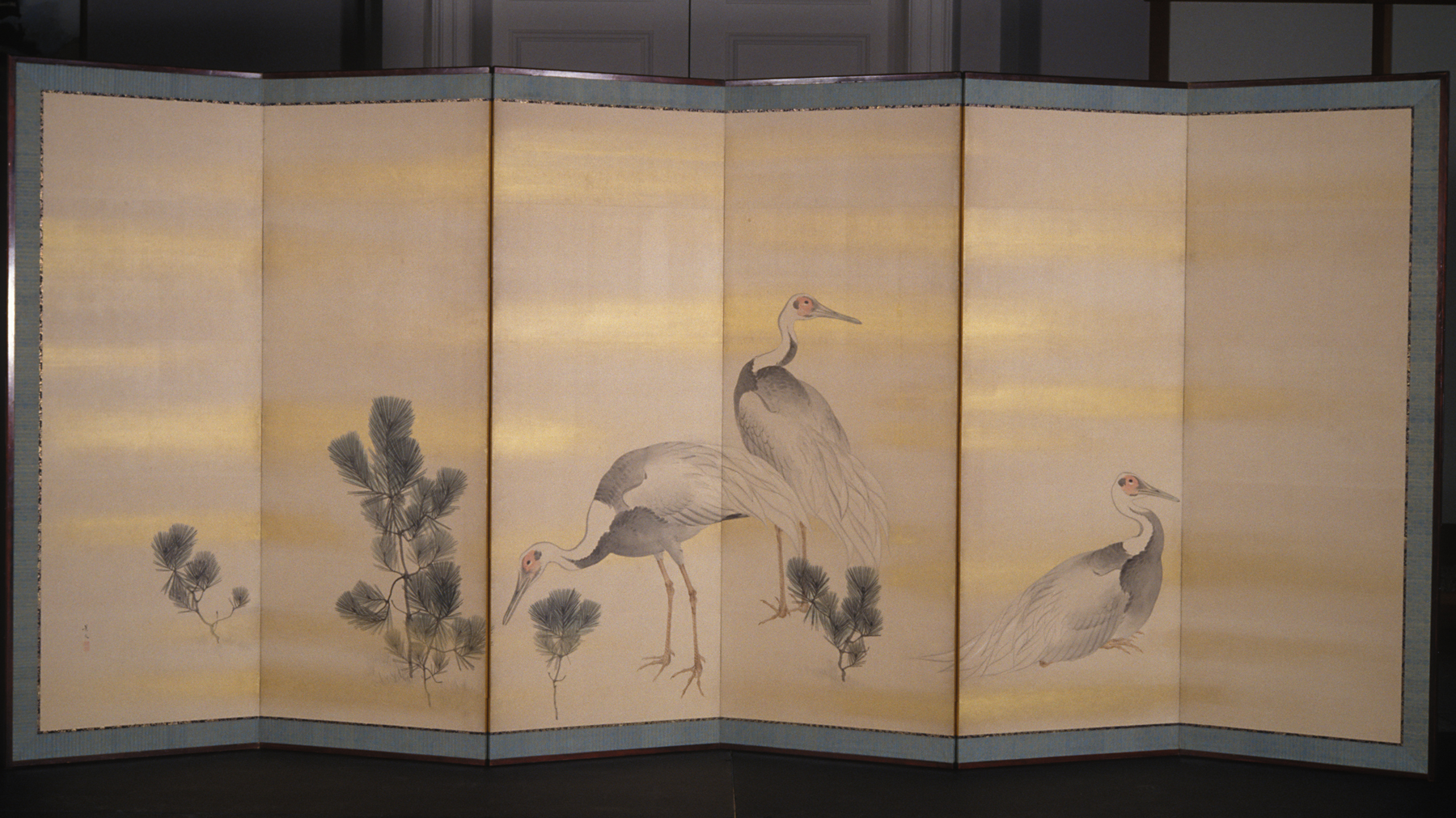Cranes and Pines, Matsumura Keibun
Artwork Overview
Matsumura Keibun, artist
1779–1843
Cranes and Pines,
early 1800s, Edo period (1600–1868)
Portfolio/Series title: pair of screens
Where object was made: Japan
Material/technique: ink; paper; color
Credit line: Museum purchase: Barbara Benton Wescoe Fund, Helen Foresman Spencer Art Acquisition Fund, and R. Charles and Mary Margaret Clevenger Fund
Accession number: 1997.0013.b
Not on display
If you wish to reproduce this image, please submit an image request


